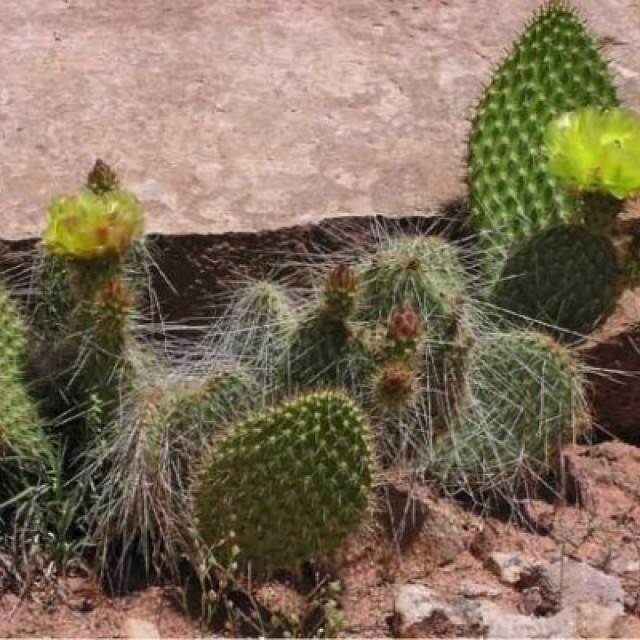COMMON NAME
Plains pricklypear
SCIENTIFIC NAME
Opuntia phaeacantha
ALSO KNOWN AS
Central pricklypear, Hairspine cactus, Starvation pricklypear
Plant family
Cactus (Cactaceae)
Plant group
Wildflowers and Herbs
Shrub-like cacti, 1 to 2 ft tall. Spiny pads 2 to 6 inches long. Flowers pink, purple, or yellow, 2 to 3.5 in wide. Cylindrical fruits are brownish and dry with little spines.
65 reports
40+
OBSERVERS
65+
OBSERVATIONS
Identification hints
Plains pricklypear plants are shrub-like cacti, 1 to 2 feet tall. They can spread widely and often sprout from the fallen pads. The "pads" are not true leaves but function as such and are 2 to 6 inches long. The pads have numerous bumps, called areoles, which contain up to 18 spines each and have wooly brown fibers called "glochids". The spines can be quite long, 1 to 6 inches in length, so be careful not to touch them! The flowers are beautiful, pink, purple, or yellow blooms and 2 to 3.5 inches wide. The fruits are oval to cylindrical in shape, brownish and dry with little spines. Source: USDA PLANTS and Wikipedia
Did you know?
Numerous tribes used plains pricklypear as a food source or as a drug. Cheyenne, Hopi, and Montana Indians ate the fruit, while the Goshute, Hopi, and Paiutes also cooked and ate the fleshy stems. Both the stems and fruit were used to make dye and the spines were used to make fish hooks. The flesh of the stem joints was used to soothe backache but the Flathead, and the Okanagan-Colville applied a poultice of flesh to sores and infections. Plains prickly pear plants also serve as a food source for pronghorn antelope and black-tailed prairie dogs.
DISTRIBUTION IN TH U.S.
Arizona
,
California
,
Colorado
,
Kansas
,
New Mexico
,
Nevada
,
Oklahoma
,
South Dakota
,
Texas
,
Utah
HABITAT
There is no information available about this species.
See Menu
- 2021 Chicago Botanic Garden. All Rights Reserved.
-
Creative Commons
BY-NC-SA 4.0 - Terms of Use
- Privacy Policy
- Data Sharing and Citation Policies
- 2021 Chicago Botanic Garden. All Rights Reserved.



